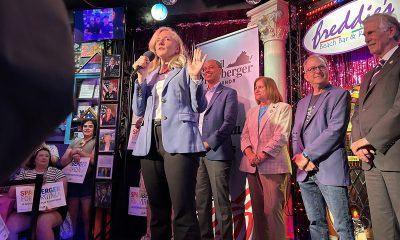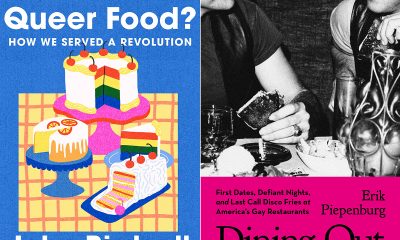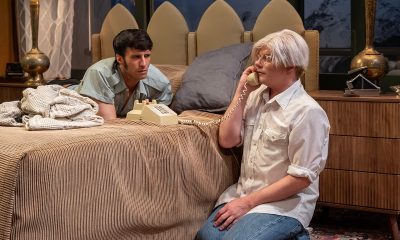Books
‘Secret City’ reveals long hidden stories of gay purges in federal gov’t
Gay journalist uncovers reports of closeted officials serving under 10 presidents
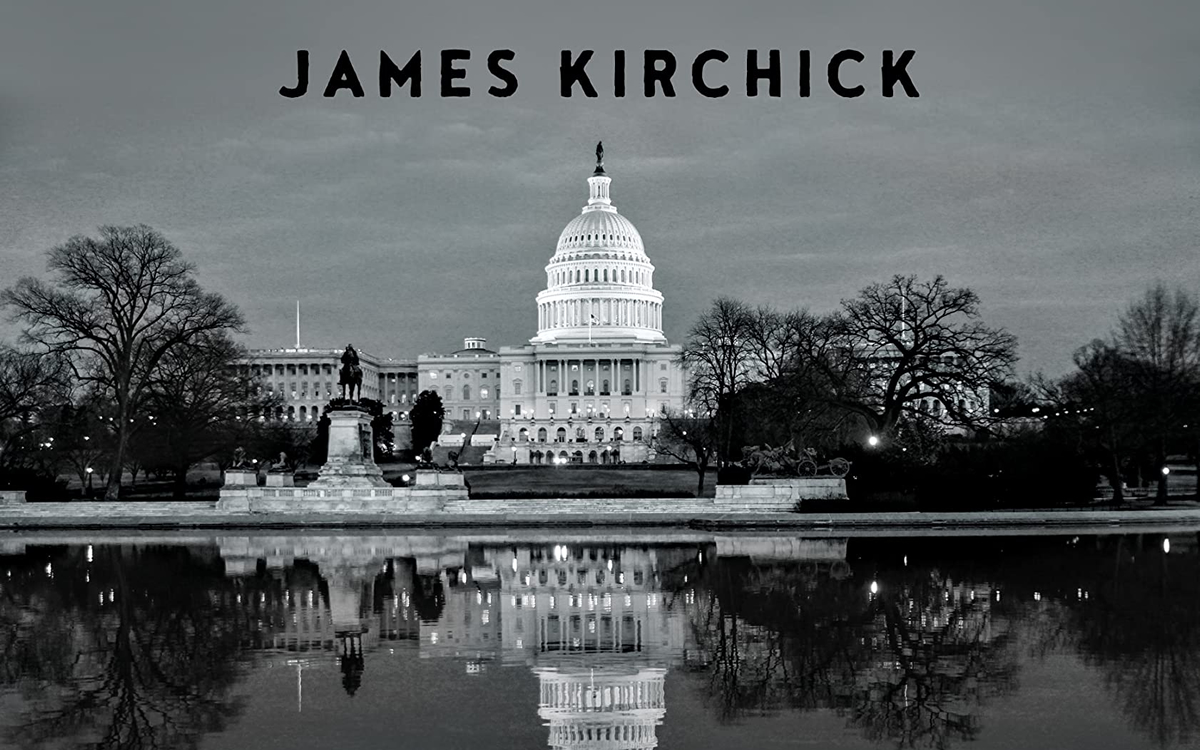
A new book released this week called “Secret City: The Hidden History of Gay Washington” is drawing the attention of LGBTQ rights activists and longtime Washington insiders alike for its never-before-told stories about dozens of closeted mostly gay men and at least one lesbian who worked for 10 U.S. presidents beginning with Franklin Roosevelt through George H.W. Bush.
The book ends with the role LGBTQ people played under the 11th president it covers — Bill Clinton — by pointing out that Clinton was the first president to appoint openly gay or lesbian people to high-level administration positions.
The book’s author, gay journalist James Kirchick, says he chose to end the book with his coverage of Clinton because Clinton, for the most part, ended the restrictions against gays and lesbians serving in sensitive civilian government jobs by lifting the longstanding ban on approving government security clearances for gays.
In an interview with the Blade, Kirchick said he began his research for the book over a decade ago in his role as a Washington reporter with a longstanding interest in the Cold War and the U.S. government’s struggle to address the perceived threat of communism promoted by the then Soviet Union at the conclusion of World War II.
He said that prior to that time homosexuality was perceived as a “sin, a very bad sin,” but not a threat to the safety and security of the country. But that changed at the start of World War II when the country developed what Kirchick calls a bureaucracy for managing military and governmental secrets needed to protect the country from outside threats.
“From the Second World War until the end of the Cold War that followed, the specter of homosexuality haunted Washington,” Kirchick writes in the introduction to his book. “Nothing posed a more potent threat to a political career or exerted a more fearsome grip on the nation’s collective psyche, than the love expressed between people of the same sex,” he writes.
Kirchick notes the development widely observed by historians and LGBTQ activists that homosexuals in important government positions were perceived to be a threat to national security because societal bias and official government restrictions forced them to hide their sexual orientation and made them susceptible to blackmail by foreign government agents seeking to uncover U.S. military secrets.
In his 2006 book, “The Lavender Scare,” gay historian David K. Johnson reports how large numbers of gays were denied security clearances and forced out of their jobs because of fears of security breaches that Johnson said were never shown to have happened.
Kirchick, who said he was inspired by Johnson’s book, expands on “Lavender Scare’s” reporting by providing detailed stories of dozens of individual gay people or people incorrectly thought to be homosexual who became ensnared in investigations into their alleged sexual orientation while working for at least 10 U.S. presidents.
The presidents the book covers include Franklin Roosevelt, Harry Truman, Dwight Eisenhower, John F. Kennedy, Lyndon Johnson, Richard Nixon, Gerald Ford, Jimmy Carter, Ronald Reagan, George H.W. Bush, and Bill Clinton.
A statement announcing the release of the book says Kirchick obtained thousands of pages of declassified documents, interviewed more than 100 people, and viewed documents from presidential libraries and archives across the country to obtain the information he needed for “Secret City.”
Among those forced out of their job was Sumner Wells, a high-level State Department official and diplomatic adviser under Franklin Roosevelt. In “Secret City,” Kirchick tells how despite Wells’ reputation as an invaluable adviser to Roosevelt, the president made it clear Wells could not remain in the administration after word got out that he had solicited one or more young men for sex who worked as porters on passenger trains that Wells had taken to travel to different parts of the country.
Not all of the book’s stories involve government officials. In one story Kirchick tells about Oliver Sipple, a former U.S. Marine who saved the life of President Gerald Ford by deflecting the gun of a woman who attempted to shoot Ford as he emerged from an event in San Francisco. The widely publicized incident prompted some gay activists to publicly disclose that Sipple was gay and should be hailed as a hero.
The book reports that Sipple was not out publicly and became emotionally distraught after being outed. His parents reacted in a hostile way after learning from press reports that their son was a homosexual and told him he was no longer welcome to visit his parents, according to the book.
A far more positive story emerged during the administration of President Jimmy Carter. The book reports on a development reported by the Washington Blade and other media outlets at the time it became known in 1979 when Jamie Shoemaker, a gay man who worked as a linguist with the U.S. National Security Agency, or NSA, had his security clearance revoked and was told he would be fired after officials at the highly secretive agency discovered he was gay.
Shoemaker contested the effort to dismiss him and retained D.C. gay rights pioneer Frank Kameny, who was a recognized expert in helping gays contest efforts to revoke government security clearances, to represent him. In a development that surprised many political observers, former Admiral Bobby Ray Inman, who Carter had appointed as director of the NSA, determined that Shoemaker was not a threat to the agency’s secrets and could retain his security clearance and his job.
Inman made that determination after Kameny and Shoemaker made it clear that Shoemaker was an out gay man who had no problem disclosing his sexual orientation at work if doing so did not jeopardize his job. Shoemaker became the first known gay person to be allowed to retain a high-level security clearance at a U.S. government intelligence agency such as the NSA and possibly at any government agency or department.
Shoemaker, who has since retired, told the Blade that in recent years, an LGBTQ employee group at the NSA has invited him to return to the agency’s headquarters as a guest speaker for the group’s LGBTQ Pride event with the full approval of NSA officials. The welcoming of Shoemaker at the NSA in recent years is viewed by activists as a development illustrating the dramatic changes that have taken place in support of LGBTQ workers at security agencies like the NSA, the CIA, and the FBI.
But Kirchick includes in his book a slightly less positive story about one of Carter’s White House aides, Midge Costanza, who Kirchick says was known by political insiders to be a lesbian who never publicly acknowledged her sexual orientation. Costanza became widely known and praised by LGBTQ activists when she invited LGBTQ leaders from across the country to the White Houses to provide her and the Carter administration with a briefing on LGBTQ issues. The meeting became the first known time that gay and lesbian rights advocates had been invited to the White House for an official meeting.
Carter himself was out of town at the time of the meeting for a pre scheduled visit to the presidential retreat at Camp David, White House officials said at the time.
Kirchick reports that in the following year or two, during Carter’s first and only term in office as president, higher up White House officials who Kirchick says were known as the “Georgia Mafia” because of their association with Carter at the time he was Georgia governor, disparaged Costanza over claims that she was pushing positions too far to the left. Among other things, the White House officials moved Costanza’s office from a prestigious location near the Oval Office to an out of the way basement space. Costanza a short time later resigned and returned to Rochester, New York, where she began her political career.
Despite what Kirchick said was a setback of sorts for the LGBTQ cause by the outcome of Costanza’s tenure at the White House, he writes in his book that the situation soon improved for gay people working in the federal government in Washington.
“The story of the secret city is also the story of a nation overcoming one of its deepest fears,” Kirchick writes in the concluding chapter of “Secret City.”
“Only when gay people started living their lives openly did the hysteria start to become plain for what its was,” he writes. “Across the broad sweep of American history, no minority group has witnessed a more rapid transformation in its status, in the eyes of their fellow citizens, than gay people in the second half of the twentieth century,” Kirchick concludes.
The Blade may receive commissions from qualifying purchases made via this post.
Books
Two new books on dining out LGBTQ-style
Visit nightclubs, hamburger joints, and a bathhouse that feeds customers
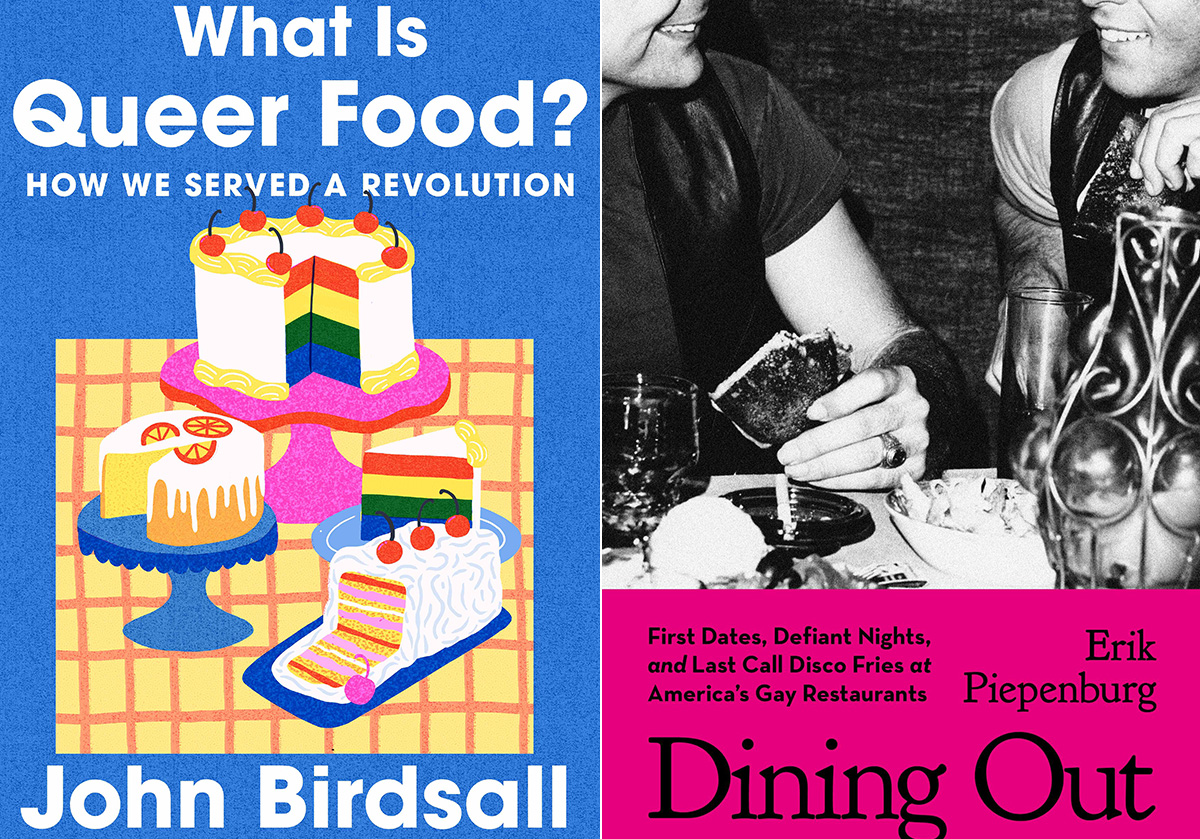
‘What is Queer Food? How We Served a Revolution’
By John Birdsall
c.2025, W.W. Norton
$29.99/304 pages
‘Dining Out: First Dates, Defiant Nights, and Last Call Disco Fries at America’s Gay Restaurants’
By Erik Piepenburg
c.2025, Grand Central
$30/352 pages
You thought a long time about who sits where.
Compatibility is key for a good dinner party, so place cards were the first consideration; you have at least one left-hander on your guest list, and you figured his comfort into your seating chart. You want the conversation to flow, which is music to your ears. And you did a good job but, as you’ll see with these two great books on dining LGBTQ-style, it’s sometimes not who sits where, but whose recipes were used.
When you first pick up “What is Queer Food?” by John Birdsall, you might miss the subtitle: “How We Served a Revolution.” It’s that second part that’s important.

Starting with a basic gay and lesbian history of America, Birdsall shows how influential and (in)famous 20th century queer folk set aside the cruelty and discrimination they received, in order to live their lives. They couldn’t speak about those things, he says, but they “sat down together” and they ate.
That suggested “a queer common purpose,” says Birdsall. “This is how who we are, dahling, This is how we feed our own. This is how we stay alive.”
Readers who love to cook, bake or entertain, collect cookbooks, or use a fork will want this book. Its stories are nicely served, they’re addicting, and they may send you in search of cookbooks you didn’t know existed.
Sometimes, though, you don’t want to be stuck in the kitchen, you want someone else to bring the grub. “Dining Out” by Erik Piepenburg is an often-nostalgic, lively look at LGBTQ-friendly places to grab a meal – both now and in the past.

In his introduction, Piepenburg admits that he’s a journalist, “not a historian or an academic,” which colors this book, but not negatively. Indeed, his journeys to “gay restaurants” – even his generous and wide-ranging definitions of the term – happily influence how he presents his narrative about eateries and other establishments that have fed protesters, nourished budding romances, and offered audacious inclusion.
Here, there are modern tales of drag lunches and lesbian-friendly automats that offered “cheap food” nearly a century ago. You’ll visit nightclubs, hamburger joints, and a bathhouse that feeds customers on holidays. Stepping back, you’ll read about AIDS activism at gay-friendly establishments, and mostly gay neighborhood watering holes. Go underground at a basement bar; keep tripping and meet proprietors, managers, customers and performers. Then take a peek into the future, as Piepenburg sees it.
The locales profiled in “Dining Out” may surprise you because of where they can be found; some of the hot-spots practically beg for a road trip.
After reading this book, you’ll feel welcome at any of them.
If these books don’t shed enough light on queer food, then head to your favorite bookstore or library and ask for help finding more. The booksellers and librarians there will put cookbooks and history books directly in your hands, and they’ll help you find more on the history and culture of the food you eat. Grab them and you’ll agree, they’re pretty tasty reads.
The Blade may receive commissions from qualifying purchases made via this post.
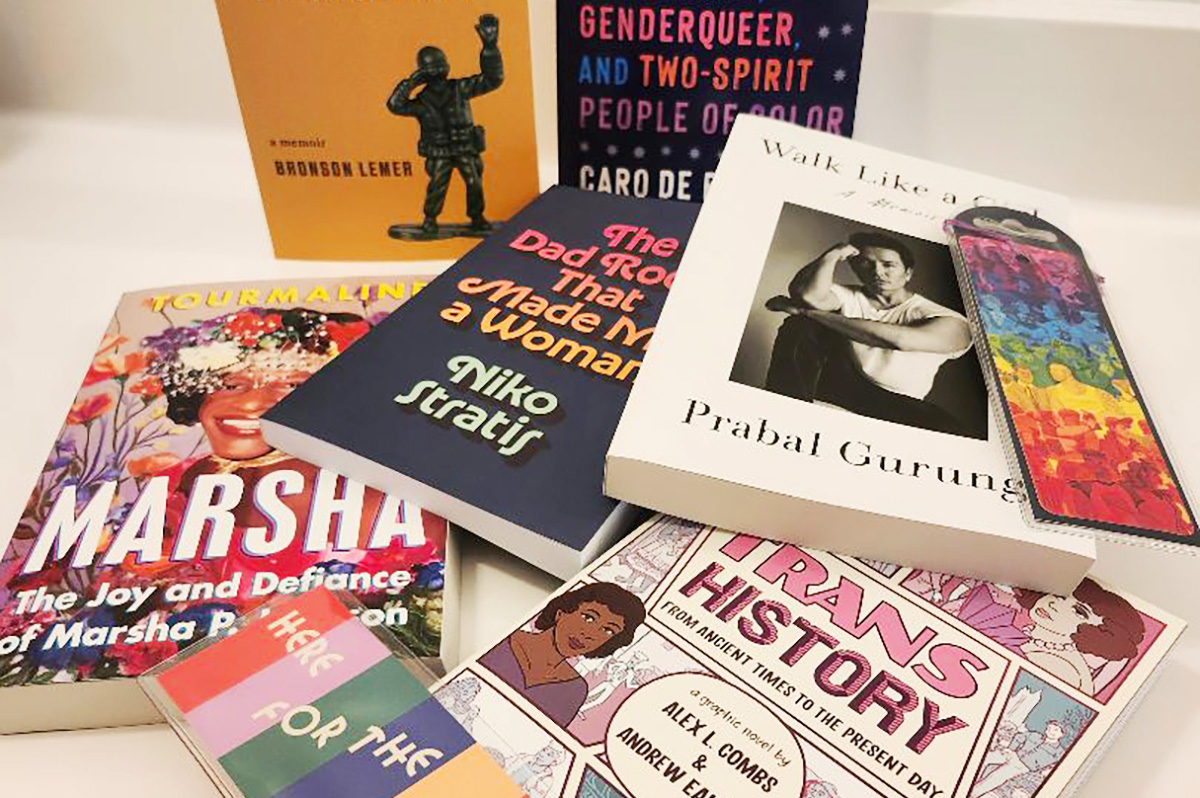
You’re going to be on your feet a lot this month.
Marching in parades, dancing in the streets, standing up for people in your community. But you’re also likely to have some time to rest and reflect – and with these great new books, to read.
First, dip into a biography with “Marsha: The Joy and Defiance of Marsha P. Johnson” by Tourmaline (Tiny Rep Books, $30), a nice look at an icon who, rumor has it, threw the brick that started a revolution. It’s a lively tale about Marsha P. Johnson, her life, her activism before Stonewall and afterward. Reading this interesting and highly researched history is a great way to spend some time during Pride month.
For the reader who can’t live without music, try “The Dad Rock That Made Me a Woman” by Niko Stratis (University of Texas Press, $27.95), the story of being trans, searching for your place in the world, and finding it in a certain comfortable genre of music. Also look for “The Lonely Veteran’s Guide to Companionship” by Bronson Lemer (University of Wisconsin Press, $19.95), a collection of essays that make up a memoir of this and that, of being queer, basic training, teaching overseas, influential books, and life.
If you still have room for one more memoir, try “Walk Like a Girl” by Prabal Gurung (Viking, $32.00). It’s the story of one queer boy’s childhood in India and Nepal, and the intolerance he experienced as a child, which caused him to dream of New York and the life he imagined there. As you can imagine, dreams and reality collided but nonetheless, Gurung stayed, persevered, and eventually became an award-winning fashion designer, highly sought by fashion icons and lovers of haute couture. This is an inspiring tale that you shouldn’t miss.
No Pride celebration is complete without a history book or two.
In “Trans History: From Ancient Times to the Present Day” by Alex L. Combs & Andrew Eakett ($24.99, Candlewick Press), you’ll see that being trans is something that’s as old as humanity. One nice part about this book: it’s in graphic novel form, so it’s lighter to read but still informative. Lastly, try “So Many Stars: An Oral History of Trans, Nonbinary, Genderqueer, and Two-Spirit People of Color” by Caro De Robertis (Algonquin Books of Chapel Hill. $32.00) a collection of thoughts, observations, and truths from over a dozen people who share their stories. As an “oral history,” you’ll be glad to know that each page is full of mini-segments you can dip into anywhere, read from cover to cover, double-back and read again. It’s that kind of book.
And if these six books aren’t enough, if they don’t quite fit what you crave now, be sure to ask your favorite bookseller or librarian for help. There are literally tens of thousands of books that are perfect for Pride month and beyond. They’ll be able to determine what you’re looking for, and they’ll put it directly in your hands. So stand up. March. And then sit and read.
a&e features
James Baldwin bio shows how much of his life is revealed in his work
‘A Love Story’ is first major book on acclaimed author’s life in 30 years
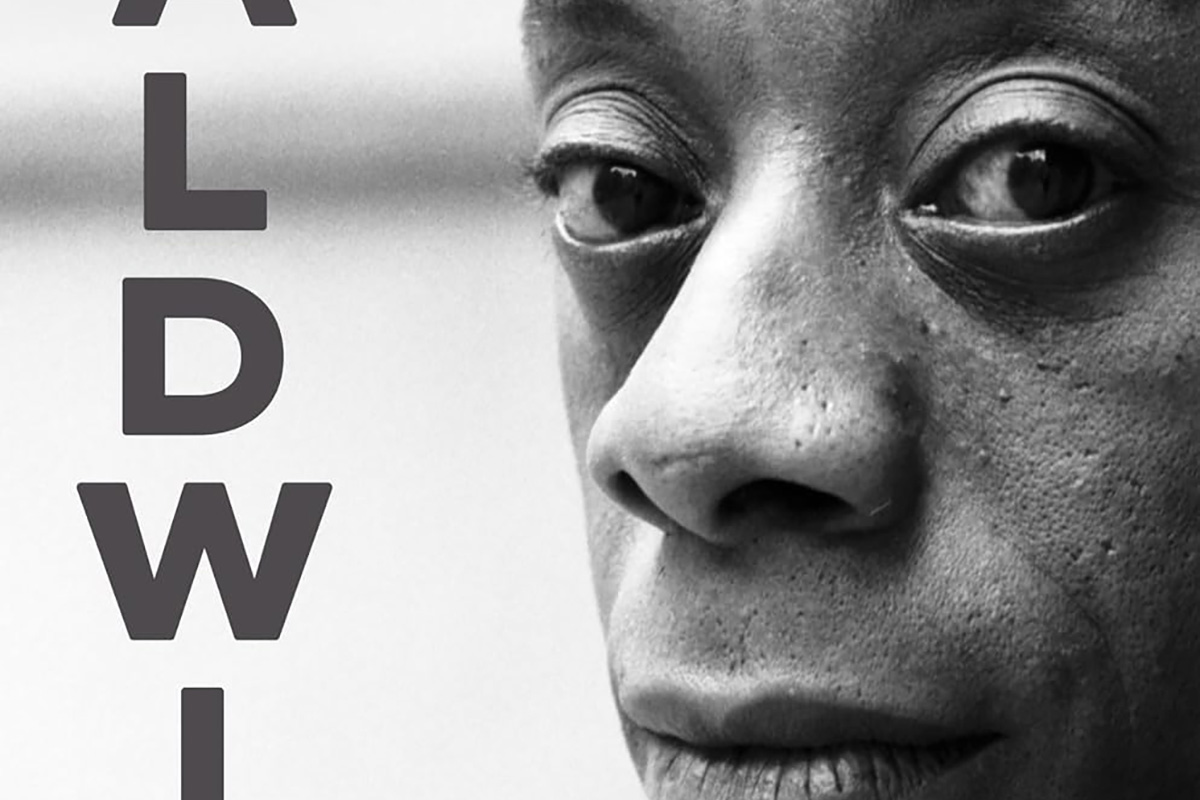
‘Baldwin: A Love Story’
By Nicholas Boggs
c.2025, FSG
$35/704 pages
“Baldwin: A Love Story” is a sympathetic biography, the first major one in 30 years, of acclaimed Black gay writer James Baldwin. Drawing on Baldwin’s fiction, essays, and letters, Nicolas Boggs, a white writer who rediscovered and co-edited a new edition of a long-lost Baldwin book, explores Baldwin’s life and work through focusing on his lovers, mentors, and inspirations.
The book begins with a quick look at Baldwin’s childhood in Harlem, and his difficult relationship with his religious, angry stepfather. Baldwin’s experience with Orilla Miller, a white teacher who encouraged the boy’s writing and took him to plays and movies, even against his father’s wishes, helped shape his life and tempered his feelings toward white people. When Baldwin later joined a church and became a child preacher, though, he felt conflicted between academic success and religious demands, even denouncing Miller at one point. In a fascinating late essay, Baldwin also described his teenage sexual relationship with a mobster, who showed him off in public.
Baldwin’s romantic life was complicated, as he preferred men who were not outwardly gay. Indeed, many would marry women and have children while also involved with Baldwin. Still, they would often remain friends and enabled Baldwin’s work. Lucien Happersberger, who met Baldwin while both were living in Paris, sent him to a Swiss village, where he wrote his first novel, “Go Tell It on the Mountain,” as well as an essay, “Stranger in the Village,” about the oddness of being the first Black person many villagers had ever seen. Baldwin met Turkish actor Engin Cezzar in New York at the Actors’ Studio; Baldwin later spent time in Istanbul with Cezzar and his wife, finishing “Another Country” and directing a controversial play about Turkish prisoners that depicted sexuality and gender.
Baldwin collaborated with French artist Yoran Cazac on a children’s book, which later vanished. Boggs writes of his excitement about coming across this book while a student at Yale and how he later interviewed Cazac and his wife while also republishing the book. Baldwin also had many tumultuous sexual relationships with young men whom he tried to mentor and shape, most of which led to drama and despair.
The book carefully examines Baldwin’s development as a writer. “Go Tell It on the Mountain” draws heavily on his early life, giving subtle signs of the main character John’s sexuality, while “Giovanni’s Room” bravely and openly shows a homosexual relationship, highly controversial at the time. “If Beale Street Could Talk” features a woman as its main character and narrator, the first time Baldwin wrote fully through a woman’s perspective. His essays feel deeply personal, even if they do not reveal everything; Lucian is the unnamed visiting friend in one who the police briefly detained along with Baldwin. He found New York too distracting to write, spending his time there with friends and family or on business. He was close friends with modernist painter Beauford Delaney, also gay, who helped Baldwin see that a Black man could thrive as an artist. Delaney would later move to France, staying near Baldwin’s home.
An epilogue has Boggs writing about encountering Baldwin’s work as one of the few white students in a majority-Black school. It helpfully reminds us that Baldwin connects to all who feel different, no matter their race, sexuality, gender, or class. A well-written, easy-flowing biography, with many excerpts from Baldwin’s writing, it shows how much of his life is revealed in his work. Let’s hope it encourages reading the work, either again or for the first time.
















